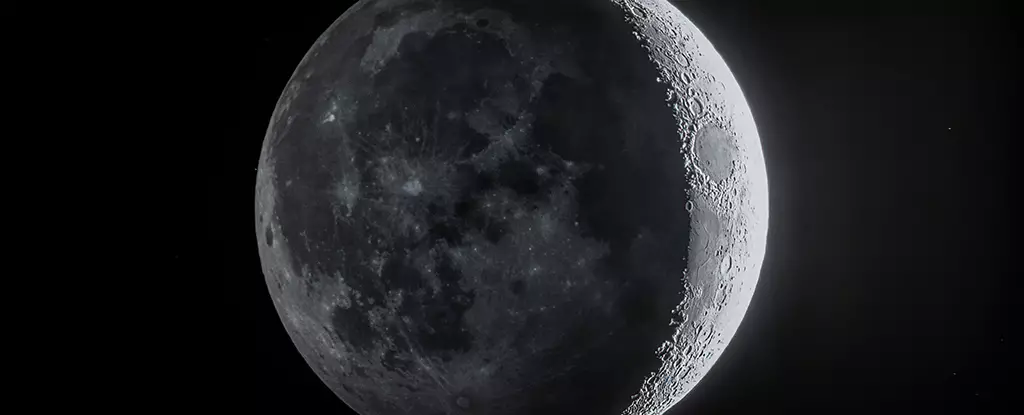The presence of ice on the Moon is a well-established fact, but its origin has remained a mystery. A recent study proposes that waves of electrons, originating from both Earth and the Sun, play a significant role in the formation of frozen water on the lunar surface. This discovery challenges previous assumptions and opens up new avenues for understanding the complex interactions between celestial bodies.
The Moon’s encounters with Earth’s magnetotail seem to be crucial in the process of water formation. As the Moon passes through the magnetotail, it is bombarded by waves of highly charged electrons and ions, drawn from Earth’s atmosphere and the Sun’s solar wind radiation. These electrified particles have been previously overlooked in regard to water formation on the Moon, but emerging evidence suggests that they have a substantial impact.
While previous studies pointed to hydrogen ions from solar winds as the source of lunar water, it is apparent that water formation persists even when the lunar surface is shielded from solar wind exposure. This anomaly indicates that other forces, particularly electrons, are involved in the process. Researchers believe that high-energy electrons could interact with lunar soil, liberating trapped hydrogen that then combines with oxygen to form water molecules.
The magnetotail may harbor various water formation processes that have yet to be fully understood. The presence of high-energy electrons in the magnetotail raises the possibility of additional sources of water, unrelated to the implantation of solar wind protons. These electrons exhibit similar effects to the solar wind protons, suggesting that they could contribute significantly to lunar water formation. Further analysis and experiments on the lunar surface are necessary to confirm these findings and uncover the exact mechanisms at work.
The evidence of the Moon’s dependence on Earth for its water supply underscores the interconnectedness of our planet and its satellite. The discovery of water formation processes on the Moon, influenced by Earth’s magnetotail, suggests a symbiotic relationship between the two celestial bodies that has yet to be fully explored. This finding, combined with previous observations of rusty lunar poles, indicates that there are many unrecognized aspects linking Earth and its Moon.
The role of electrons in the formation of lunar ice represents a significant breakthrough in our understanding of the Moon’s water origins. This discovery challenges previous theories that focused solely on solar wind protons as the source of lunar water. By recognizing the influence of electrons and their interactions with the lunar surface, scientists can begin to unravel the complexities of celestial water formation. Continued exploration and experimentation on the lunar surface will be crucial in confirming these findings and expanding our knowledge of the intricate relationship between Earth and the Moon.


Leave a Reply